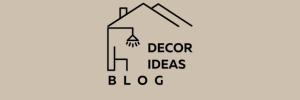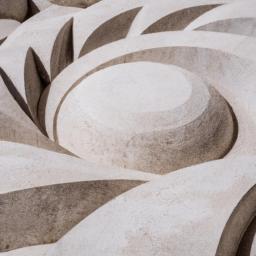Transform your plain concrete surfaces into eye-catching features with decorative concrete form liners. Discover the benefits, installation process, and maintenance in this guide.
Concrete is a popular material used in construction due to its durability and strength. However, plain concrete surfaces can appear dull and unappealing. That’s where decorative concrete form liners come in. In this article, we will explore what decorative concrete form liners are, their importance, and how they can add aesthetic value to your concrete surfaces.
Definition of Decorative Concrete Form Liners
Decorative concrete form liners are materials used to create patterns and textures on the surface of concrete. They are made of various materials, including plastic, foam, and rubber. These liners are placed inside the formwork before pouring the concrete, allowing the surface of the concrete to take on the texture of the liner.
Importance of Decorative Concrete Form Liners
Decorative concrete form liners can transform a plain concrete surface into an eye-catching and visually appealing feature. They can be used to create intricate designs, patterns, and textures that can mimic natural materials such as brick, stone, and wood. These liners can also be used to incorporate branding and logos into concrete surfaces, making them ideal for commercial and public spaces.
Furthermore, decorative concrete form liners have many practical benefits. They can help to hide imperfections on the surface of the concrete, such as cracks and blemishes. They can also add slip resistance to the surface of the concrete, making it safer to walk on.
In conclusion, decorative concrete form liners are an excellent way to add value and appeal to your concrete surfaces. In the following sections, we will explore the different types of decorative concrete form liners, their benefits, installation process, and maintenance.
Types of Decorative Concrete Form Liners
Decorative concrete form liners come in various types, each with its unique features and benefits. Here are the three most common types of decorative concrete form liners:
Plastic Form Liners
Plastic form liners are popular due to their versatility and cost-effectiveness. They are made of high-density polyurethane and are available in a wide range of patterns and textures. They can be used to create intricate designs and textures, such as bricks, stones, and wood planks. Plastic form liners are easy to install and remove, making them ideal for both small and large concrete projects.
Foam Form Liners
Foam form liners are an excellent choice for creating large, intricate patterns and textures on concrete surfaces. They are made of polystyrene foam and are available in various thicknesses and densities. Foam form liners are lightweight, making them easy to handle and install. They can be easily cut and shaped to fit any design and can be used to create unique patterns and textures that mimic natural materials.
Rubber Form Liners
Rubber form liners are ideal for creating high-quality, detailed designs on concrete surfaces. They are made of durable, high-quality rubber and are available in various thicknesses and textures. Rubber form liners can be used to create intricate designs and textures, such as leaves, flowers, and other natural patterns. They are easy to install and remove, making them ideal for use on any project.
In conclusion, each type of decorative concrete form liner has its unique features and benefits. Choosing the right type of liner will depend on your project’s needs, budget, and design requirements. In the next section, we will explore the benefits of using decorative concrete form liners.
Benefits of Decorative Concrete Form Liners
Decorative concrete form liners offer several benefits that make them an excellent choice for enhancing concrete surfaces. In this section, we will explore some of these benefits.
Aesthetic Appeal
Decorative concrete form liners can transform a plain concrete surface into a visually appealing feature. They can be used to create a wide range of designs, patterns, and textures that can mimic natural materials such as wood, stone, and brick. These liners can also be customized to incorporate branding and logos into the surface of the concrete, making them ideal for commercial and public spaces.
Cost-Effective
Decorative concrete form liners can be a cost-effective way to enhance the appearance of concrete surfaces. They are less expensive than using natural materials such as stone or brick, and they require less maintenance over time. Additionally, using form liners can help to hide imperfections on the surface of the concrete, reducing the need for costly repairs or replacements.
Durable
Decorative concrete form liners are made of durable materials that can withstand harsh weather conditions and heavy foot traffic. They are resistant to wear and tear and can last for many years without fading or deteriorating. This makes them an excellent choice for outdoor spaces such as sidewalks, driveways, and patios.
Versatile
Decorative concrete form liners are incredibly versatile and can be used in a wide range of applications. They can be used to create decorative walls, columns, and other architectural features. They can also be used to create unique flooring designs or to enhance the appearance of pool decks and other outdoor spaces.
In conclusion, decorative concrete form liners offer many benefits that make them an excellent choice for enhancing concrete surfaces. They are cost-effective, durable, and versatile, making them an ideal choice for both residential and commercial applications.
Installation Process of Decorative Concrete Form Liners
Decorative concrete form liners require a specific installation process to achieve the desired results. In this section, we will break down the installation process into three parts: surface preparation, application of form liners, and removal of form liners.
Preparation of Surface
Before applying decorative concrete form liners, the surface must be adequately prepared. The surface should be clean, free of debris, and dry. Any existing coatings or sealers should be removed as they can interfere with the adhesion of the form liners. Additionally, the surface should be level and smooth to ensure that the form liners adhere correctly.
Application of Form Liners
Once the surface is prepared, the form liners can be applied. The form liners are placed inside the formwork before the concrete is poured. The form liners should be secured to the formwork to prevent them from moving during the pouring process. The surface of the form liner should be coated with a release agent to prevent the concrete from sticking to the liner.
The concrete is then poured into the formwork, ensuring that it completely covers the form liner. Once the concrete has been poured, it should be smoothed and leveled to ensure that the surface is uniform and free from any air pockets.
Removal of Form Liners
After the concrete has cured, the form liners can be removed. The removal process should be done carefully to avoid damaging the concrete surface. The form liners should be removed slowly and gently, ensuring that no parts of the liner are left behind. Any residue left from the release agent should be cleaned off the surface of the concrete.
In conclusion, the installation process of decorative concrete form liners requires careful attention to detail to ensure that the surface is uniform and free from any defects. The preparation of the surface, application of the form liners, and removal of the form liners are all crucial steps in achieving the desired result.
Maintenance and Care for Decorative Concrete Form Liners
Decorative concrete form liners are an investment that can last for years with proper care and maintenance. In this section, we will discuss some essential tips for maintaining and caring for your decorative concrete form liners.
Cleaning and Staining
Cleaning your decorative concrete form liners is crucial to maintain their appearance and prevent the growth of mold and mildew. For routine cleaning, use a mild soap and water solution and a soft-bristled brush to scrub the surface of the form liner. Avoid using abrasive cleaners or tools that can damage the surface of the liner.
Staining your decorative concrete form liners can enhance their appearance and protect them from the elements. However, it is essential to use the right type of stain for your liner material. Acid-based stains are suitable for concrete and cement-based liners, while water-based stains are ideal for foam and plastic liners. Consult your manufacturer’s instructions to determine the appropriate stain and application method for your specific liner.
Repairing and Replacing
Over time, decorative concrete form liners may become damaged or worn. It is crucial to address any issues promptly to prevent further damage. Small cracks or chips can be repaired using a patching compound, while larger damage may require replacement of the liner. Always consult your manufacturer’s instructions for repair and replacement procedures.
Protecting and Sealing
Applying a sealer to your decorative concrete form liners can protect them from the elements and extend their lifespan. Sealers can also enhance the appearance of the liner and make it easier to clean. Be sure to select a sealer that is appropriate for your liner material and follow the manufacturer’s instructions for application.
In conclusion, maintaining and caring for your decorative concrete form liners is crucial to ensure their longevity and appearance. Be sure to clean and stain your liners regularly, address any damage promptly, and apply a sealer to protect and enhance their appearance.
Conclusion
Decorative concrete form liners offer a practical and cost-effective way to enhance the appearance of concrete surfaces. They are available in various materials, including plastic, foam, and rubber, and can be used to create intricate designs and patterns that resemble natural materials.
In addition to their aesthetic appeal, decorative concrete form liners have many benefits. They can help to hide imperfections on the surface of the concrete, add slip resistance, and make the surface of the concrete safer to walk on. They are also durable and require minimal maintenance.
If you’re looking to enhance the appearance of your concrete surfaces, decorative concrete form liners are an excellent option to consider. They are versatile, cost-effective, and offer endless design possibilities. With the help of a professional installer, you can transform your plain concrete surfaces into eye-catching features that will impress and delight.
For more tips and ideas on home decor and design, visit Decor Ideas Blog.

